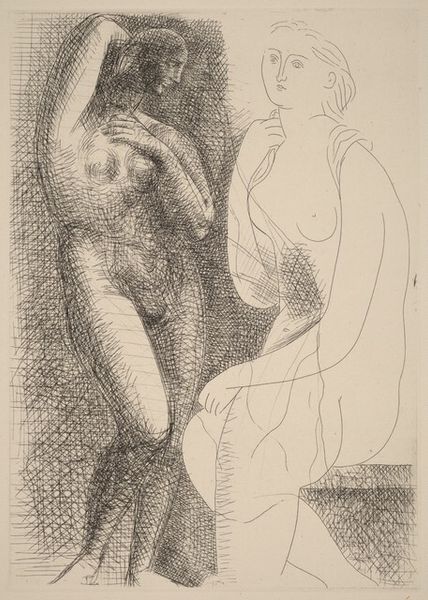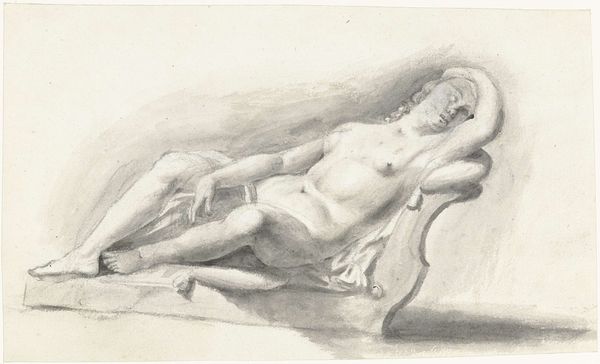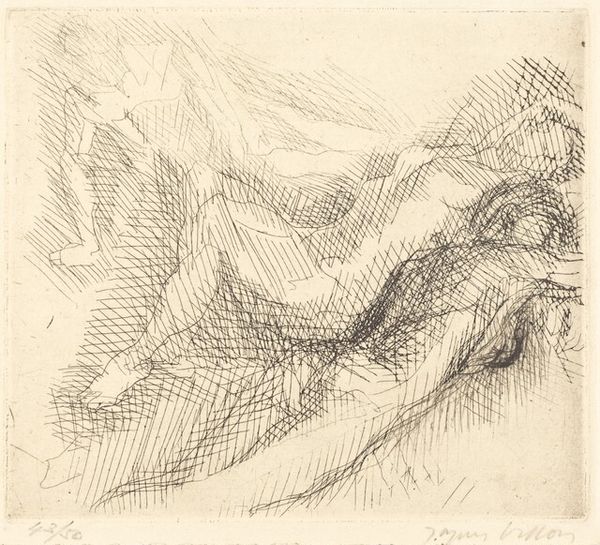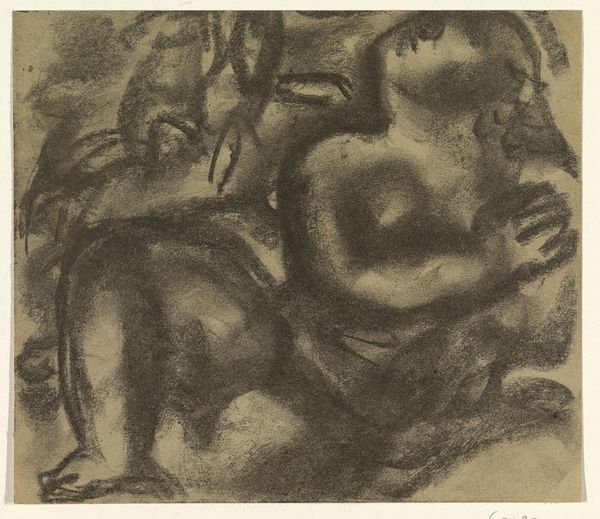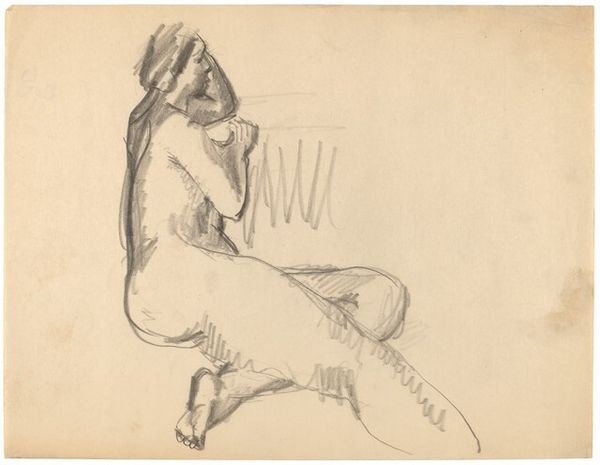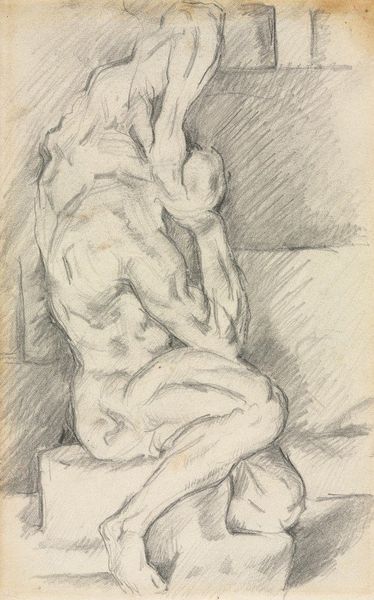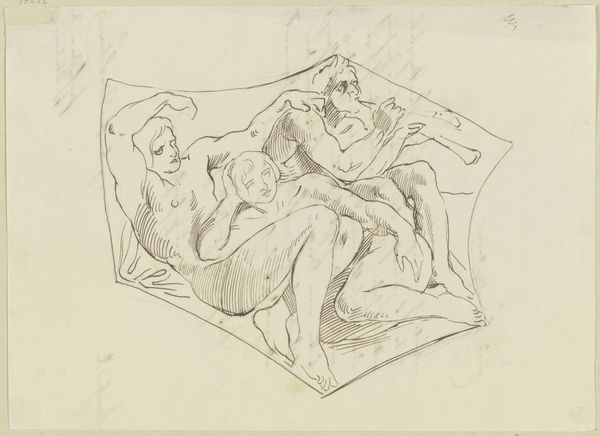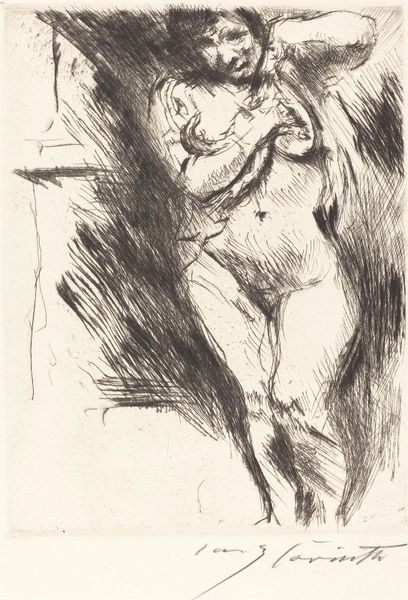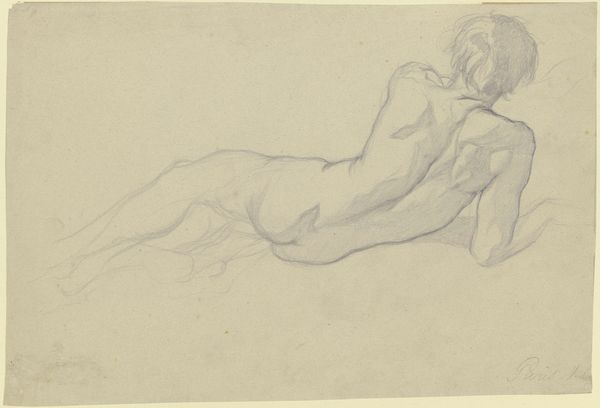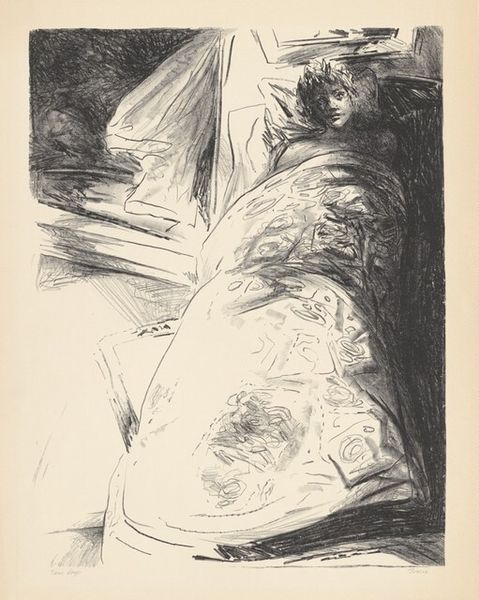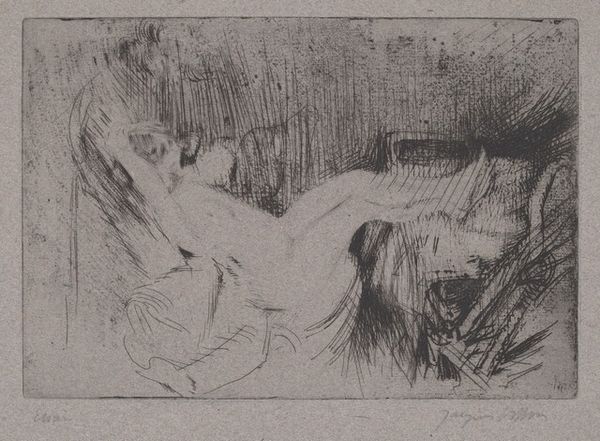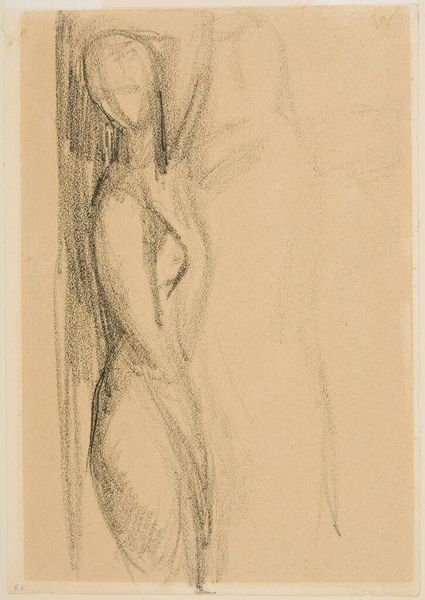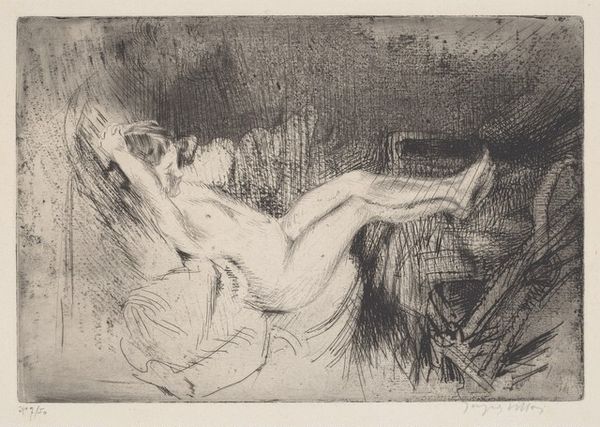
drawing, print, pencil
#
portrait
#
pencil drawn
#
drawing
# print
#
pencil sketch
#
figuration
#
pencil drawing
#
pencil
Dimensions: Image: 212 x 295 mm Sheet: 332 x 430 mm
Copyright: National Gallery of Art: CC0 1.0
Editor: Here we have Myron Nutting’s “Figure” from around 1935, a pencil drawing and print. There's a sense of intimacy to it, like catching a glimpse of someone in a private moment. The figure itself is so loosely sketched. What’s your take on this, in terms of its context? Curator: Well, seen through the lens of its time, around 1935, Nutting's "Figure" participates in a broader cultural fascination with the body and with representation. It's important to remember that drawings and prints were very accessible media at the time, occupying an interesting public role. How does the relatively unfinished quality of the sketch inform that role? Editor: It’s like it’s less about idolizing and more about observing, but publicly, maybe through exhibition. Do you think it's making a comment on academic traditions, or just participating in them? Curator: It certainly acknowledges the academic tradition of figure drawing, but the incompleteness, as you pointed out, might signal a move away from the highly polished salon style. Consider the social context: the Depression era saw a lot of questioning of established norms. Could this sketchy quality reflect that, a kind of artistic austerity? Or, is this meant to feel immediate to an audience? Editor: That makes a lot of sense. The lack of perfect realism makes it more human. It brings an important degree of closeness to the public audience who views it. I'm learning that understanding art goes way beyond aesthetics; it is about comprehending culture. Curator: Exactly! Art and the image, in particular, are never neutral. Understanding that dynamic helps us appreciate not just the beauty but the meaning embedded within artworks like Nutting's "Figure."
Comments
No comments
Be the first to comment and join the conversation on the ultimate creative platform.
